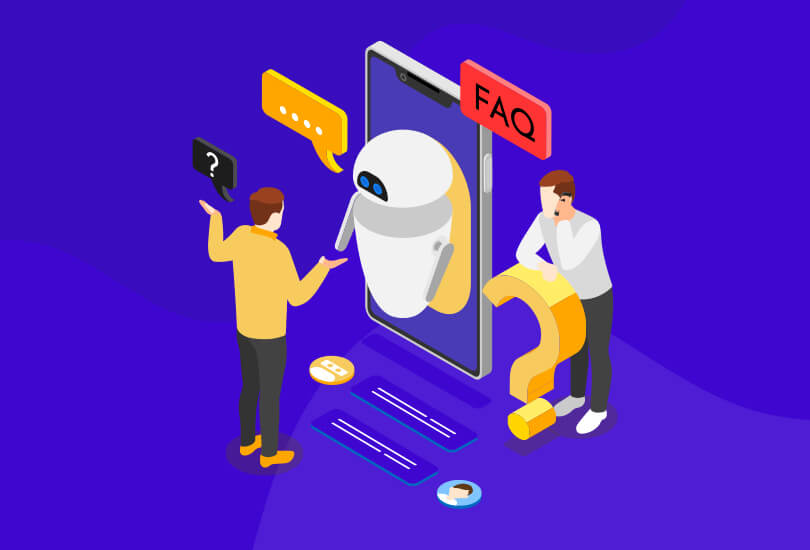In the digital age today, there is a need to get things done faster than before. The problem is that customers want answers, now, and they want solutions god damn fast. Enter: Live chat support. But simple reactivity doesn’t suffice any longer. To truly be remarkable, your business should be proactive — already contacting customers before they ever have reason to reach out for help.
Good service instills trust, encourages interactivity, and ensures long-term loyalty. In this article, we’ll show you what it takes to be proactive on live chat support and ways to upgrade your user experience so that each chat is an opportunity for connection and a win.
Understand What “Proactive” Really Means
Proactivity isn’t only about how fast you respond. It’s predicting customer needs before they exist.
If, for example, someone spends an unreasonable amount of time on your pricing page, send out a helpful note. Ask them if they need help choosing a plan. That is a lot in small quantities.
To achieve the long-term process, proactive live chat should anticipate and provide solutions early while consistently finding ways to delight customers.
Step 1: Know Your Customer Through and Through
And if you want to be proactive in service, you need to know your customer. Who are they? What frustrates them? What are they looking for?
Monitor behavior, track clicks, and read through the chat history with your analytics tools. Hire another loser. Once you know how they got there, you can help before they ask.
For example, if a return customer continues to visit the refund policy, reach out and kindly clarify. That’s proactive care in action.
Step 2: Data-driven Prediction of Behavior
According to the literature, we also expect behavior to be influenced by data and regulations.
Data is your best friend. It’s that source of truth that tells you what customers are doing, where they’re hesitating, and why they give up. Track patterns — What’s falling through the cracks on which pages? Which questions repeat the most?
These kinds of tools, like CRM dashboards and real-time analytics, help you understand the needs of your potential customers. The future is predicted. Predict behavior, and you avoid problems — and prevention always beats reaction.
Step 3: Set Up Triggers for Smart Chat Invitations
Do not wait for that first “Hello?” message. Set up automatic triggers that engage your customers in chat when they need help, i.e., if a user has been on the checkout page for over 1 minute, send — “Need help checking out?”
Timing matters. Not too early, not too late. There’s the perfect sweet spot where you engage and increase conversions.
Step 4: Teach Agents How to Identify Opportunities
Technology is a help, but there are still humans behind the miracle. Build that team in, and train your support team to recognize when someone’s hesitating, when there should be silence, or when there’s confusion.
After a customer lingers, she might deliver a relaxed line: “Hey, can I help you with anything? ” She can bring them back. Proactive chat starts with proactive people — and that goes back to training and awareness.
Step 5: Personalize Every Chat
Generic messages no longer work. Personalization makes customers feel valued. Name them, what they bought in your store before, and the previous chat you had. Even a simple “Welcome back, Sarah!” adds warmth. By personalization, we mean live chat that fosters trust, loyalty, and more interaction.
Step 6: Be Mobile Friendly
Their clients hail from all over — phones, computers, and tablets. Ensure that your live chat support system works on all of the users’ devices. No chat window, no lead or sale.”
Smooth feel and Easy access to all buttons. Durable material ensures the long life of your mobile phone. Protects your phone from Scratches, Dirt, and bumps—exact fit for your device.
Step 7: Your tone defines your brand.
A proactive chat message should appear as warm, human, and clearly spoken. Avoid robotic language or jargon. So instead of “We are in the process of,” say “I understand how you feel.” It is empathy that makes a conversation, and that makes customers happy.
Step 8: Follow Up After Your Conversation
The proactivity does not end when the chat is over. Request a follow-up message or email — ‘Thanks for hanging out with us! Is everything working fine now?”
A simple act of kindness that lets them know they’re not alone and encourages a response. Follow-ups contribute to building long-term relationships and improving the level of service.
Step 9: “Critique Yourself” – The Key to Personal GROWTH!
Feedback is gold, collect it at the end of every chat, and review it often. What do customers like? What needs improvement? Use insights to up your tone, bolster weak spots, and raise response rates.
Proactive customer service is simply about getting better every day.
Step 10: Instill a Culture of Initiative
There isn’t a Proactivity 2.0 — it operates on the mentality of the person. Prompt agents to be reactive and independent, rather than always waiting for guidance. It is about rewarding them for that little bit extra.
An empowered and trusted team will tend to be more proactive over time; it’s a human’s natural action. A motivated agent is a happy one, and leads to satisfied customers.
Step 11: Track, Refine, and Adjust.
Never assume. Always measure. Monitor the reaction time, fulfillment, and changeover rates of proactive chats.
Test your knowledge and iterate based on what the data tells you. You might be doing something at the wrong time, or your tone could stand some softening. Keep changing — prophylactic service evolves with consumer behavior.
Proactive service makes the shift from reactive to remarkable. You don’t just reply — you lead. Clients feel listened to, supported, and taken care of. That’s what brings them back. Live chat is a proactive support service that can lead to fewer complaints, more satisfaction, and a stronger brand reputation.
Conclusion
It’s not hard to be proactive on live support chat. It’s about mastering the needs, anticipating your customer, and acting with empathy. Train your agents, strive for highly personal one-to-one messages, and follow up with grace.
Use data, measure results, and get better. Remember — customers notice effort. And effort builds loyalty. So, take that first step today. Don’t wait for a “Hello.” Be the first one to say it — because being proactive is not just a path but your competitive advantage for success.








